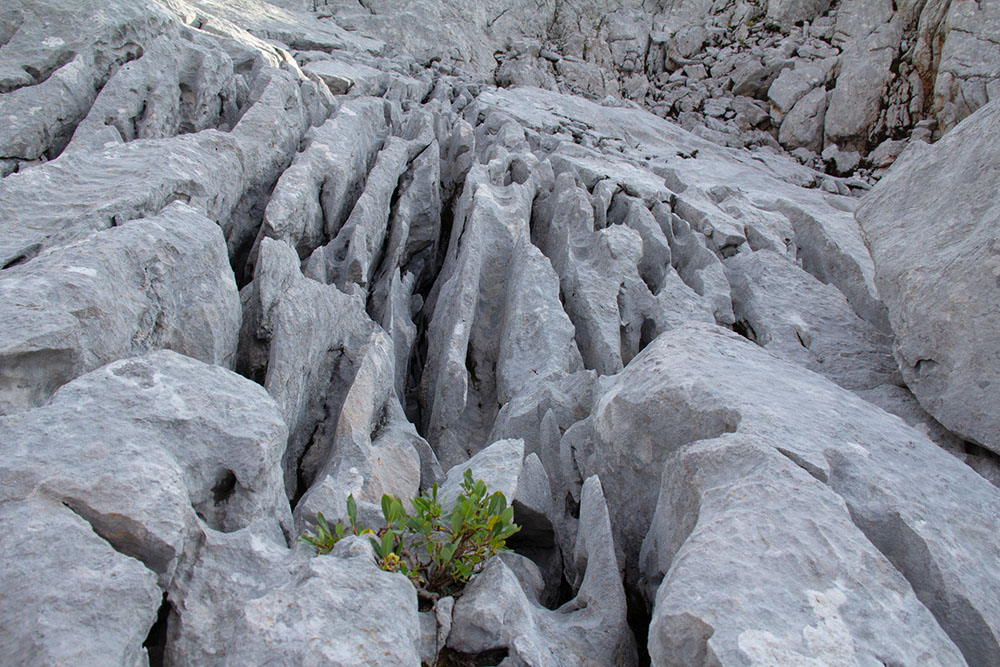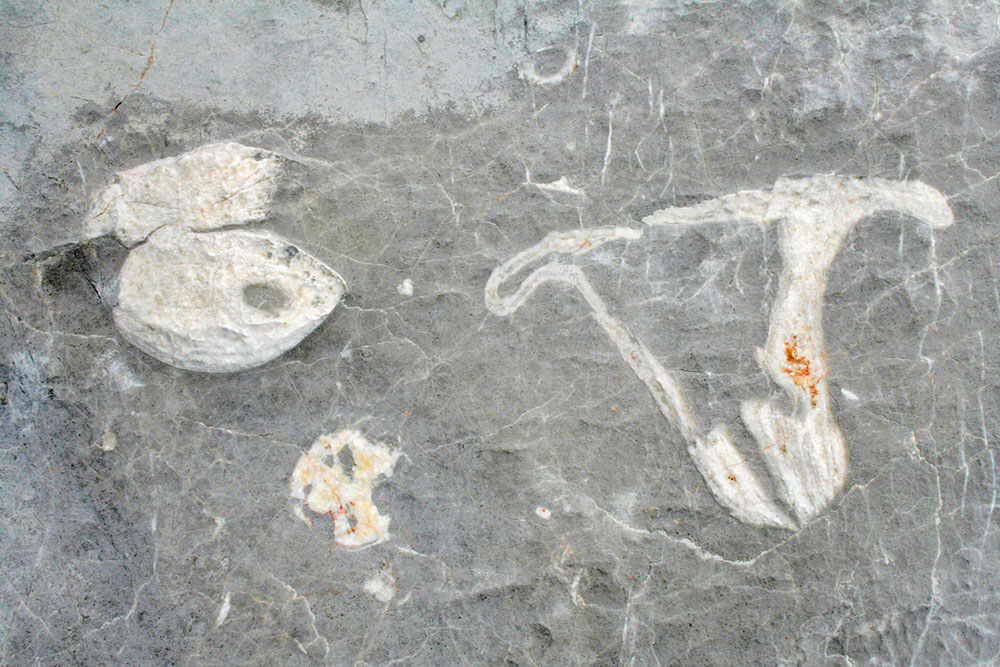Geology
The geology of the Berchtesgaden Alps
The Berchtesgaden Alps are a mountain region of about 1000 square kilometers, which belongs to the Northern Limestone Alps. The Watzmannstock is the dominant mountain range here, around it are grouped the Untersberg, Göllstock, Hagengebirge, Hochkönig, Steinernes Meer, Hochkalterstock, Reiter Alpe and Lattengebirge. The rocks of these landscape-defining mountain ranges were formed about 200 million years ago from deposits of the primeval ocean Tethys. At the beginning of the Cretaceous period, about 140 million years ago, the African continent slowly drifted northward towards Europe. In the process, the deposits of shells, snails and crustaceans at the bottom of the Tethys were unfolded and partially pushed over each other. Violent forces also lifted the rock masses into the air. The benching of the rock is clearly visible from afar in many places in the national park, for example when looking out of the Wimbach valley into the Watzmann west face.

Lime and dolomite
The landscape of the Berchtesgaden National Park is characterized by the stratification of a brittle limestone - the Ramsau dolomite - in the lower layer and a much more plastic limestone - the Dachstein limestone. This limestone forms the summit regions and high plateaus of the Berchtesgaden Alps. Depending on the different conditions of formation - for example as reef limestone or as sediment - it forms massive wall alignments with vertical fracturing, as for example on the Mannlwand, or walls crisscrossed and articulated by bands, as in the Watzmann East Face. In the Dachstein limestone one also finds one of the most characteristic fossils - the megalodonts - the remains of mussel shells from the Thetys, which resemble cow kicks and are often over the size of a hand.

Karst formation
The mountain bases in the national park consist of the brittle dolomite, which breaks under the tectonic stress and weathers grus. This grus forms, for example, the up to 300 m deep debris flow of the Wimbachgries and also the delta of St. Bartholomä at Königssee.
The oldest rocks in the area come from the Lower Triassic, they are slates of the Werfen strata, which are developed at Torrener Joch between Jenner and Schneibstein. The youngest rocks originate from the Lower Jurassic: they are exposed in small areas on the plateaus, for example on the Gotzenalm, or on the mountain flanks.
